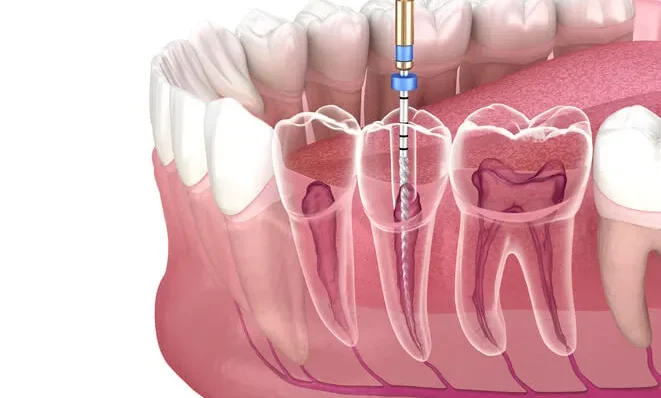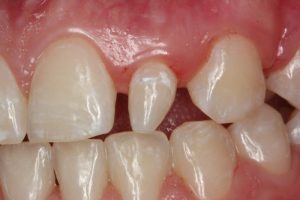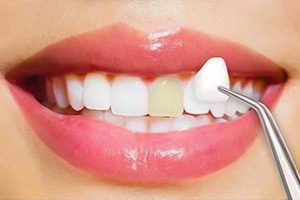I had a root canal two years ago from my dentist. I trust him and he usually does a great job. Recently, though, I have been feeling some pain in that same tooth. I’ve been told before about pain in the teeth being projected (I think it was called) from another hurting tooth. I’m pretty sure that must be it because you can’t get two root canals on same tooth, right?
Pat
Dear Pat,
There are times when pain from a tooth is projected, or referred, to from another tooth. In your case, though, it truly may be that you are feeling pain from the same tooth that had the root canal.
In most instances where a root canal is completed, the tissue, or pulp, in the tooth is completely cleaned out of the spaces and canals. Then the canals are sealed so bacteria can’t reenter. A crown is put on top and the patient goes home without another thought about the infection in the tooth.
So how come you may need another root canal?
Unfortunately, not all teeth are created equally. Most molars, for example, have three canals leading down to the roots. Every once in a while, those molars either have a fourth canal leading down, or the canals are twisted and at angles that make it difficult for a dentist, even a good, competent dentist, to completely clean out the pulp. If that infected area isn’t completely cleaned out or properly sealed, it may cause pain again as the infection grows. If that happens, a second or maybe even a third root canal may be necessary.
These scenarios of root canals aren’t common, but they do happen. If your pain continues, you may want to revisit your dentist to check your tooth. He may retreat it or may refer you to an endodontist, a dentist who specializes in root canal treatment.
The Possibility of Multiple Root Canals:
Yes, a tooth can undergo more than one root canal. Even 4 root canals in one tooth are also possible. The need for this arises when the tooth’s anatomy is more intricate than initially anticipated or when multiple canals were not addressed in the initial procedure. This scenario isn’t as uncommon as one might think, especially with molars that can have hidden or complex canal configurations.
Instances Requiring Additional Treatment:
- Missed Canals: Despite advancements in dental technology, intricate canal systems can sometimes be challenging to identify in a single procedure.
- Persistent Infection: If an infection persists or recurs after an initial root canal, additional treatment may be necessary to fully eradicate the infection.
- Complex Dental Anatomy: Molars, in particular, can have intricate root structures, necessitating a more thorough approach and the possibility of 3 root canals on same tooth.
Can You Have More Than One Root Canal on the Same Tooth?
Many people complain that they have undergone “2 root canals on same tooth still pain” Well, we know it’s very hard.
However, it is possible to have more than one root canal on the same tooth. While a single root canal procedure is often sufficient to address issues like infection or damage to the tooth’s pulp, there are scenarios where additional treatment becomes necessary.
Several factors can contribute to the need for multiple root canals on a single tooth:
- Complex Dental Anatomy: The roots of some teeth, especially molars, can have intricate and branching canal systems. During the initial root canal procedure, all canals may not be identified or treated. Subsequent treatment may be required to address any untreated canals.
- Missed Canals: Despite advancements in dental technology, certain canals may be challenging to detect in a single procedure. If a canal is overlooked during the initial root canal, it can lead to persistent issues, necessitating additional treatment.
- Persistent or Recurrent Infection: In some cases, a tooth may continue to exhibit signs of infection or experience a recurrence of infection after an initial root canal. Additional treatment becomes necessary to fully eradicate the infection and prevent further complications.
- New Issues or Trauma: Trauma or new issues with the tooth, such as a fracture or a new infection, may arise after the initial root canal. In such cases, a second or subsequent root canal may be required to address the new problem.
How Many Root Canals Can You Have on One Tooth?
The number of root canals a tooth can have varies depending on the type of tooth. Here is a general overview:
- Incisors and Canines (Front Teeth):
Typically, these teeth have one root canal.
- Premolars (Bicuspids):
Usually, premolars have one or two root canals.
- Molars (Back Teeth):
Molars are more complex and can have two, three, or even four root canals. The lower molars often have two to three canals, while the upper molars may have three to four.
Conclusion:
The decision to perform multiple root canals is guided by the specific needs of the tooth and the individual’s oral health. If you find yourself in a situation where additional root canal treatment is being considered, open communication with your dentist is crucial. Understanding the intricacies of your dental anatomy and the reasons behind multiple root canals can help demystify the process and guide you toward optimal oral health.








